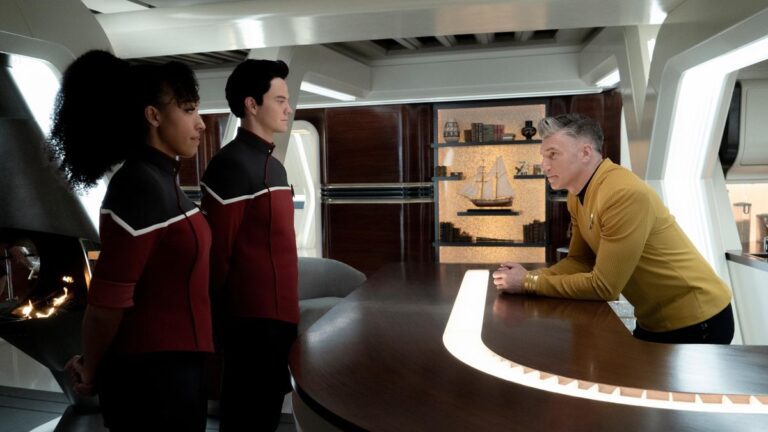
[ad_1]
There’s no shortage of reasons why “Star Trek” – like fellow genre veteran “Doctor Who” – has lasted for nearly six decades. Beyond their timeless formats, memorable characters and plenty of the coolest spaceships, the biggest factor in their longevity is arguably their ability to shapeshift into a different form every week. Their respective adventures may be populated with familiar faces, and have a tendency to begin and end in the same place. But all the bits in between have the potential to explore infinite – or thereabouts – storytelling possibilities.
It’s a captivating formula that allows shows to scare the pants off you one week, before blasting off to explore some esoteric idea from the outer edges of sci-fi the next. Subsequent adventures can then venture into the realms of pure silliness – comedy is built into a holodeck’s programming – before circling back to explore something more traditional.
Related: Star Trek movies, ranked
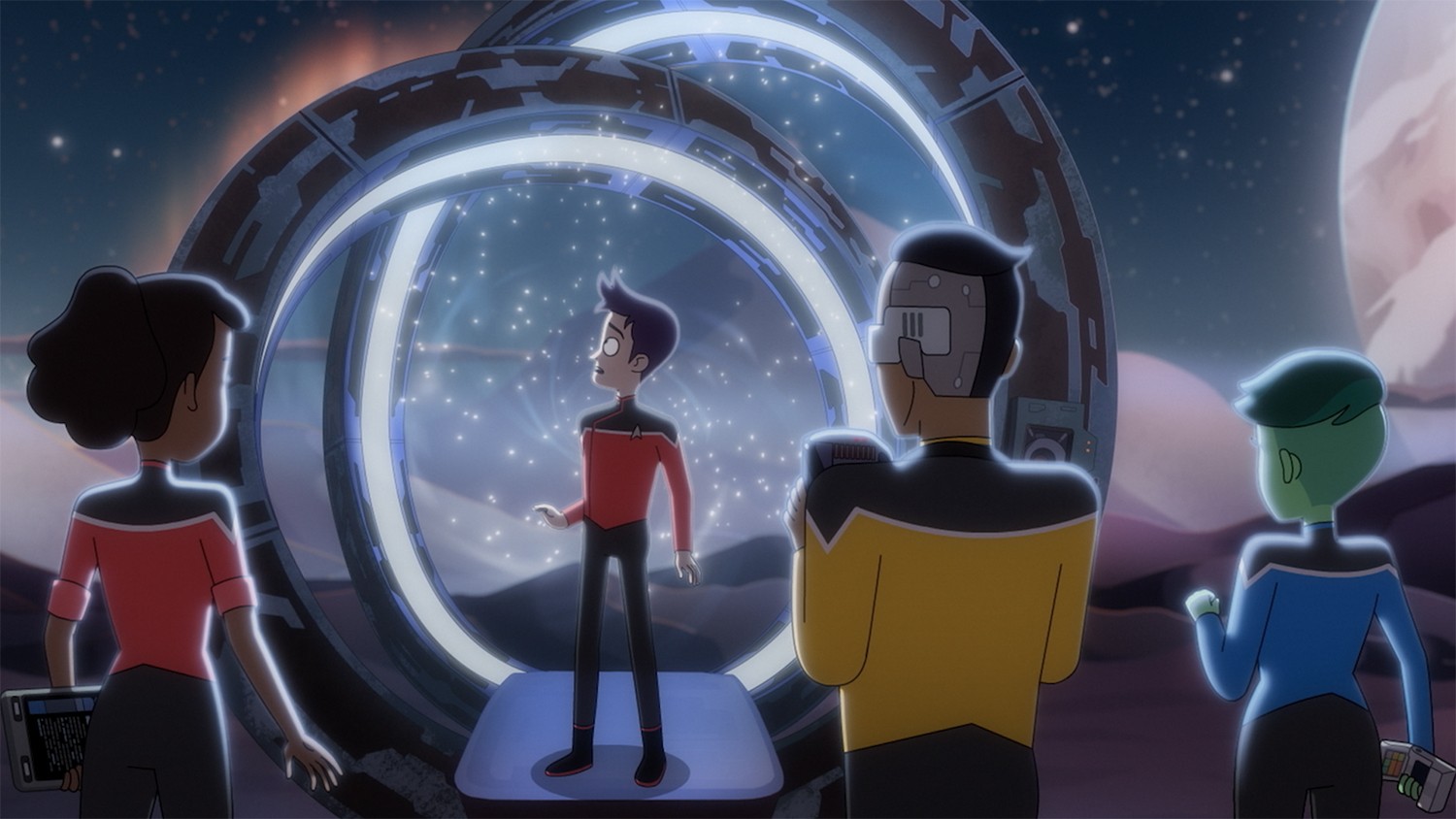
When writers have such freedom at their disposal, it feels like a waste when they play it safe by recycling stories we’ve seen many times before. Often it’s the formula-smashing episodes – such as “Buffy the Vampire Slayer”‘s silent “Hush” or “Doctor Who”‘s Weeping Angels classic “Blink” – that become fan favorites. And even when novelty storylines misfire and feel like an affront to your fandom, you can tell yourself it’s all okay because the next good episode will (or at least should) be just around the corner.
The challenge for showrunners, of course, is finding the right balance, making sure a season covers all the right (star)bases without straying too far from a show’s fundamental D.N.A. The first season of “Strange New Worlds” did this brilliantly, introducing its winning crew via a smorgasbord of familiar “Star Trek” tropes, some reinvented, others not. Unfortunately, second time out of Spacedock, the voyages of the U.S.S. Enterprise felt like they were trying a bit too hard, with multiple episodes screaming – or quite literally singing – about how unconventional they were. The problem, however, is that when most of your episodes are designed to be a novelty, sooner or later that novelty is going to wear off.
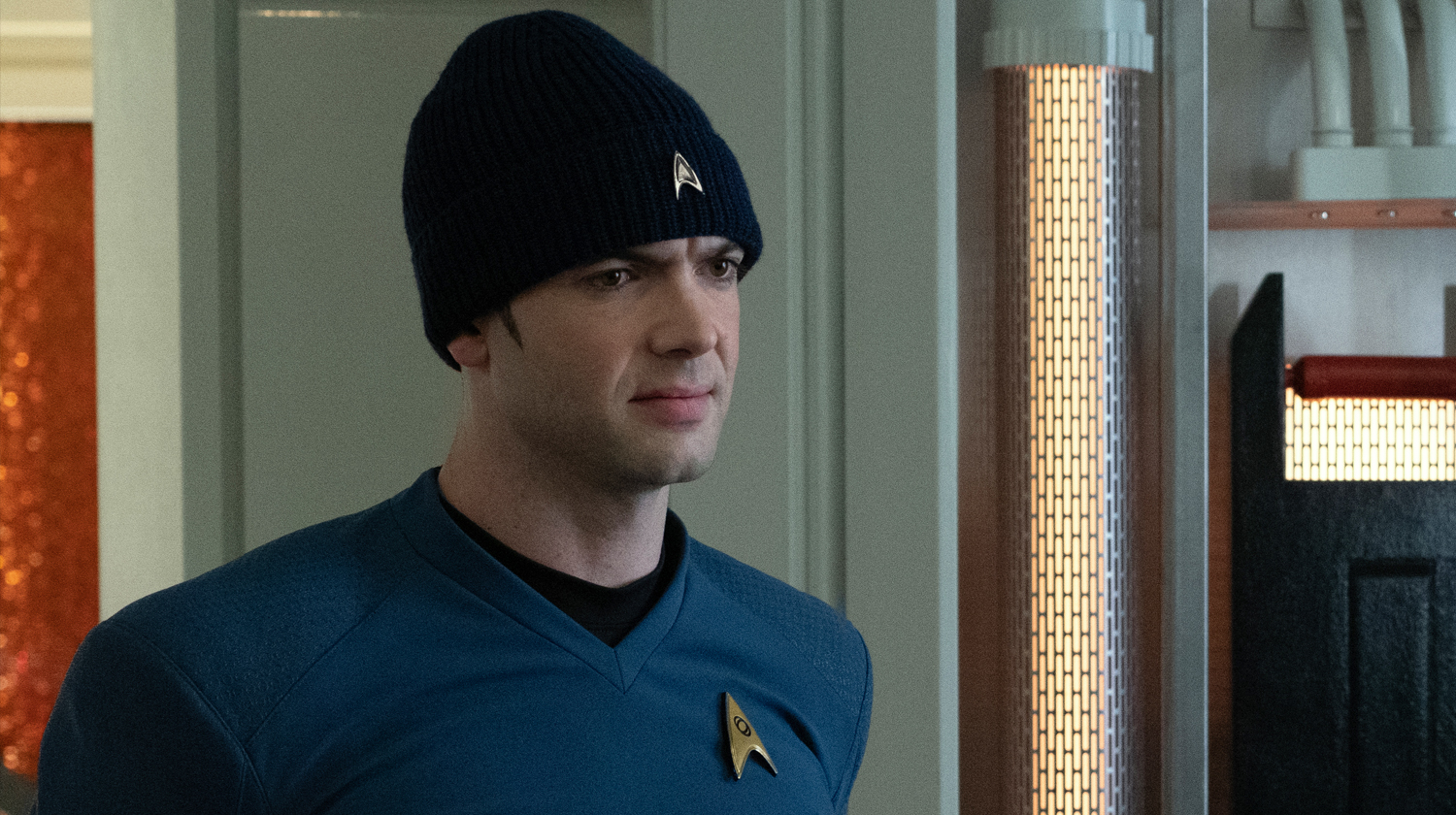
Setting the Universal Translator to the ubiquitous language of “Friends,” for a moment, season two provided us with “The One Where Spock Turns Human,” “The One with the ‘Lower Decks’ Exchange Program” and “The One Where Everybody Starts Singing.” We also got to see the infamous Khan Noonien Singh as a kid (in “Tomorrow and Tomorrow and Tomorrow“), and three “Special Guest Star” appearances from Paul Wesley’s new-look, pre-captaincy James Tiberius Kirk. In fact, there were so many gimmicks this season that the more “conventional” stories started to feel like a gimmick in themselves. (Add the last three episodes of season one to the sample, and the run of novelty-heavy storylines also featured the divisive fairytale of “The Elysian Kingdom,” and new-Kirk’s introduction in the brilliant, “Original Series”-riffing “A Quality of Mercy“.)
Of this season’s many format-breakers, the standout was arguably “Those Old Scientists“, the much-trailed crossover with sister show “Lower Decks”. Seeing as “Strange New Worlds” is a live-action drama based in the 23rd century, and “Lower Decks” is an animated comedy set more than a hundred years later, it had the potential to go spectacularly wrong. Nonetheless, Ensigns Boimler and Mariner’s away day on the Enterprise got the tone spot on, as their constant worship of their Starfleet heroes developed into a touching celebration of fandom.
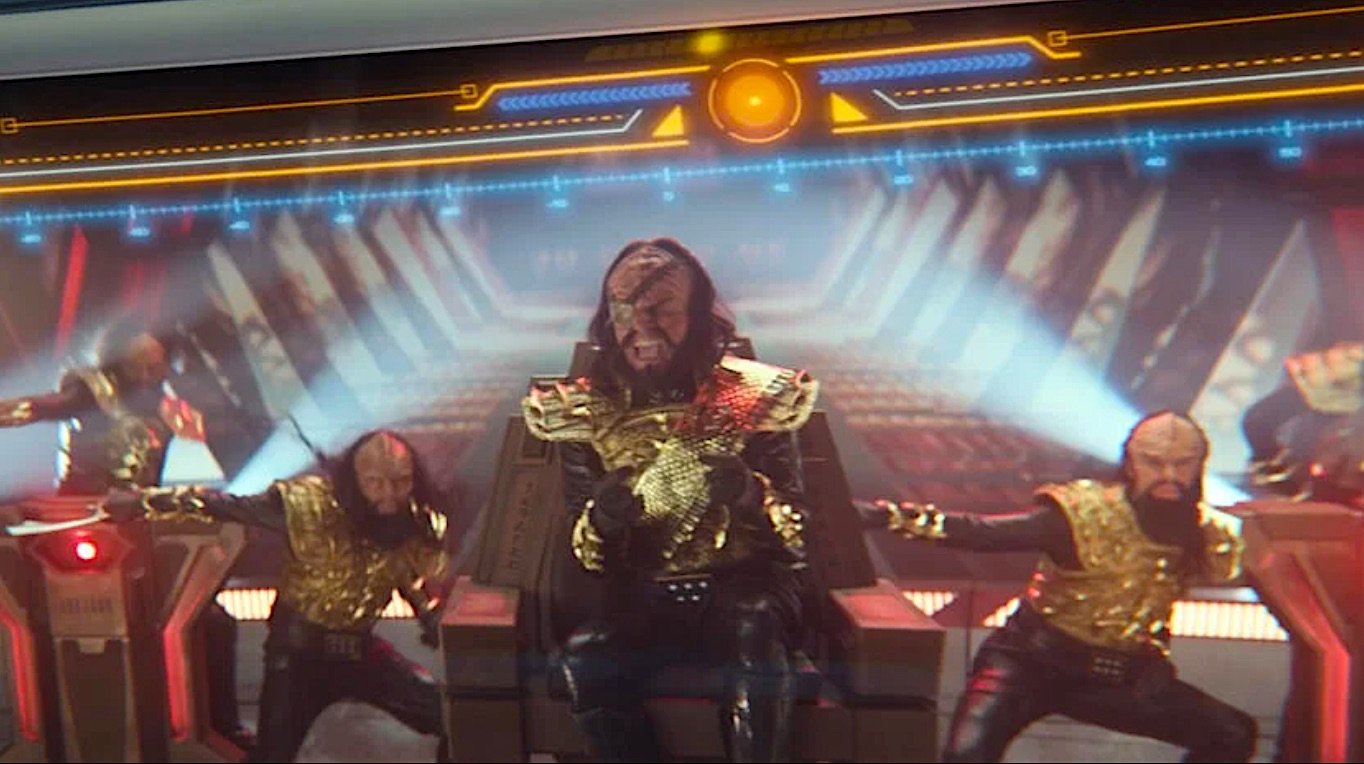
Musical episode “Subspace Rhapsody” might also have been up there with the best had “Fringe,” “Grey’s Anatomy” and – most notably – classic “Buffy” episode “Once More With Feeling” not already burst into song for themselves. Indeed, while the sci-fi storytelling had to jump through some pretty contrived hoops to get the crew singing and dancing around the Enterprise, you couldn’t fault the execution of an episode that featured musical Klingons, and will undoubtedly be immortalized via the medium of the sing-along party.
And even though “Charades” was just the latest in a long line of “Trek” stories where a transporter malfunction (or similar) has altered the D.N.A. of a crew member – in this case, removing the Vulcan half of Spock’s D.N.A. – it was the sort of light-hearted, knockabout story that’s a necessary component of every “Trek” season. It was also a companion piece of sorts to season one’s superior body swap episode, “Spock Amok.”
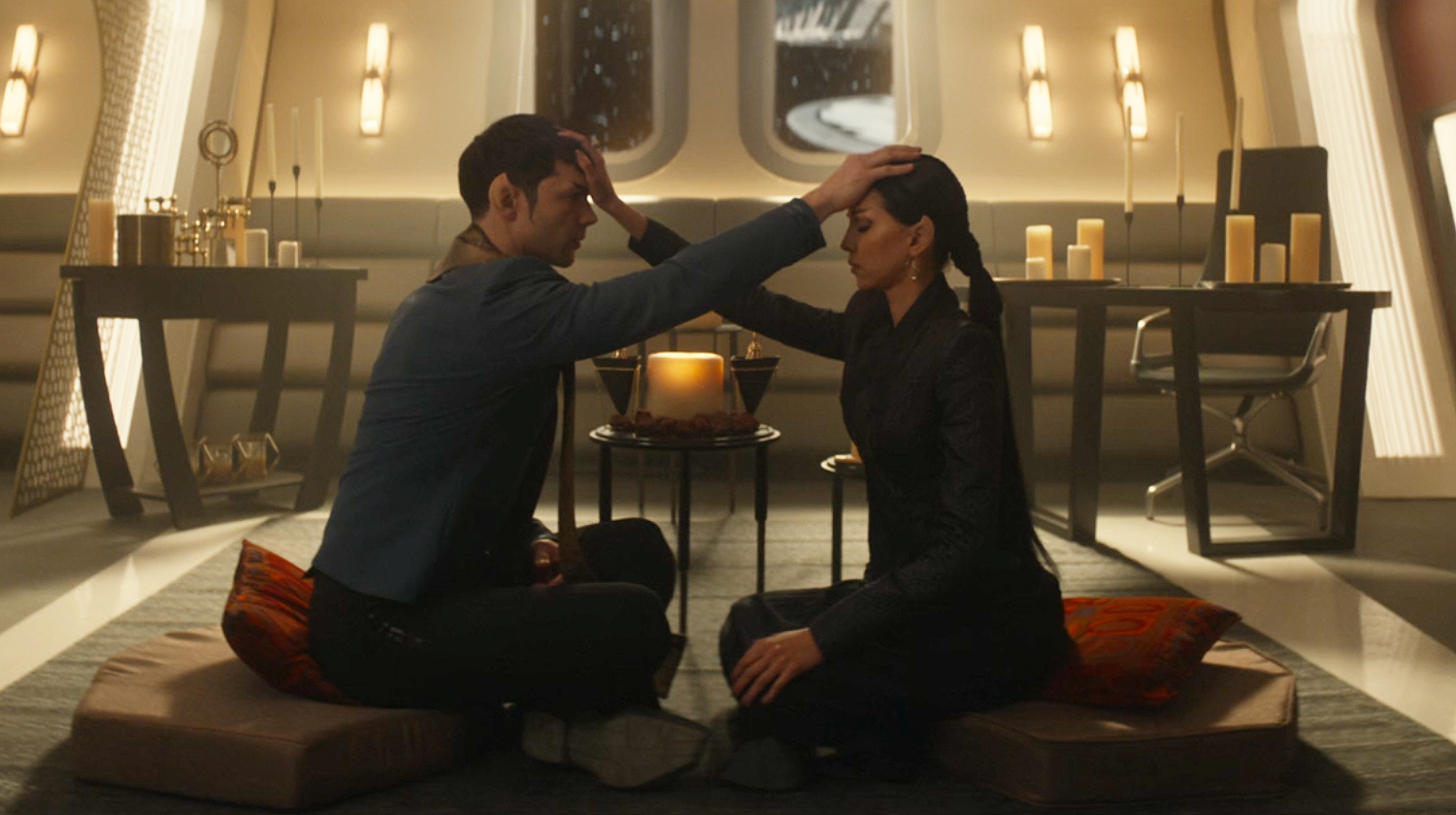
Taken in isolation – or even spread across a 26-part season of “The Next Generation” or “Deep Space Nine” – none of these episodes would have felt out of place. But running so close together, over a 10-week run, they started to feel like overkill. In fact, they’re the kind of headline-grabbing stunts you’d traditionally associate with the latter years of an ageing series struggling to recapture past glories – not a show entering its second year after a critically acclaimed debut season.
Most unnecessary of all, however, has been the presence of James T. Kirk in four out of 10 episodes. Nobody’s disputing his importance to “Star Trek”‘s 57 (and counting)-year mission – and everybody knew Kirk must be out there somewhere, doing his thing on the final frontier – but with Pike, Spock, Uhura, Number One, Nurse Chapel and Doctor M’Benga on the bridge, “Strange New Worlds” wasn’t short of legacy characters, even before Scotty turned up in season finale “Hegemony.”
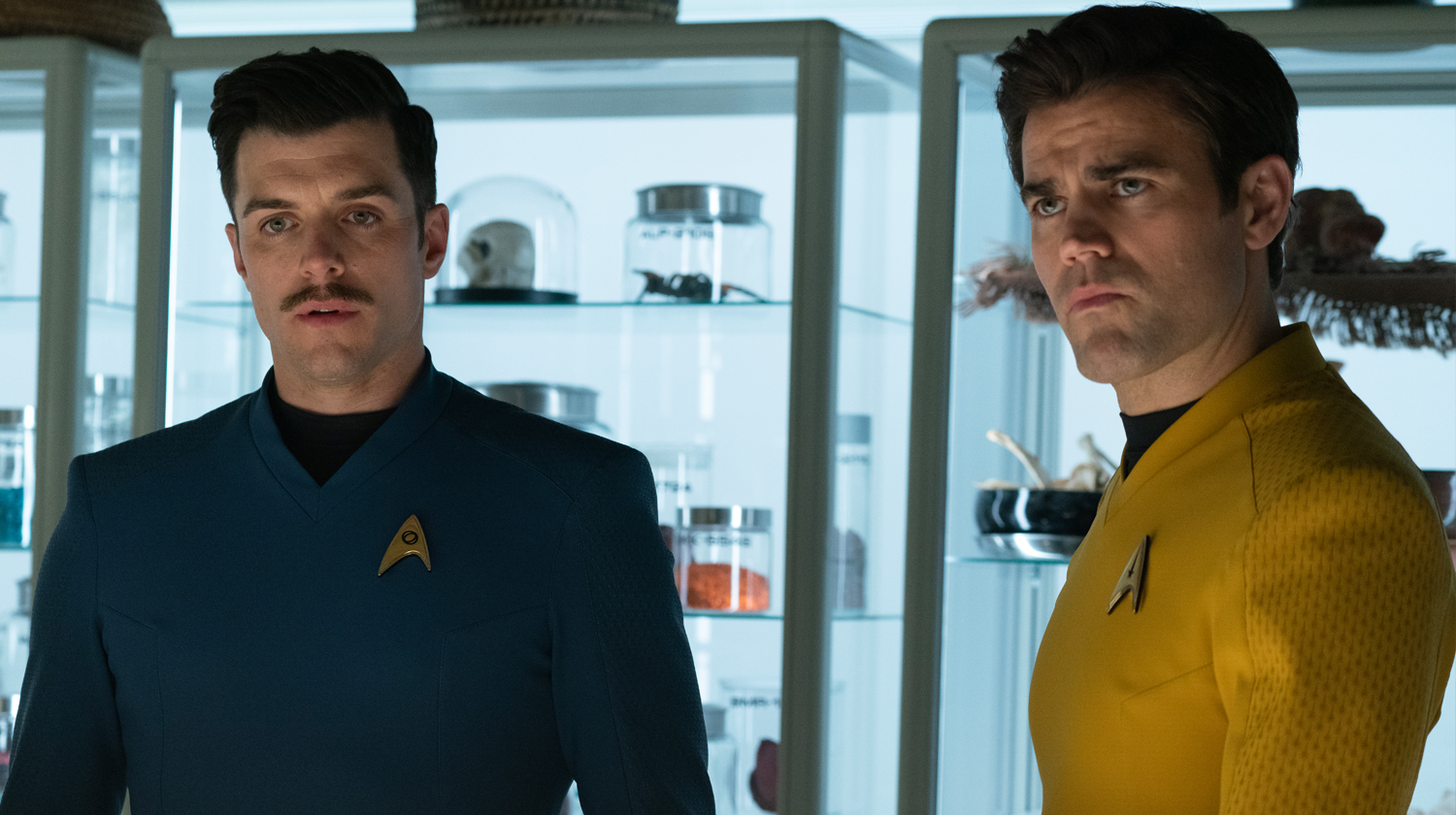
They – not to mention new “Trek” recruits, such as Ortegas and La’an – all have plenty of their own stories to be told, without some cocky guy from Iowa waltzing in and stealing the limelight. Is there much to learn about Kirk that we didn’t know already? It was hardly a revelation when he used a non-musical interlude in “Subspace Rhapsody” to tell La’an about his pregnant girlfriend, Carol, on Starbase One. Do you think they’ll call the kid David? Maybe they’ll go on to create a device that can bring life to dead worlds…
In its first season “Strange New Worlds” did just fine without overplaying the gimmicks, thanks to an engaging set of stories and – arguably – the franchise’s best ensemble cast since “The Next Generation.” Novelty episodes are great every once in a while, but do them too often and it’s like you’re trying to have all your Christmases at once.
“Strange New Worlds” season two is available on Paramount Plus.
[ad_2]